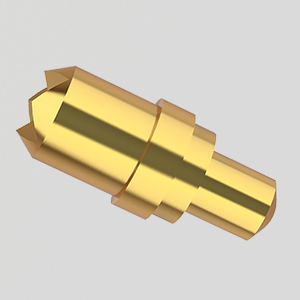CHOOSE WISELY: Be they hand tools, power tools, or test instruments, contractors and technicians have a lot to consider when making a purchase.
Contractors and technicians in the field know what it means to have the necessary tools to do a good job. Getting those tools to the field, however, can be a challenge. It is not because finding a toolbox to haul them in is difficult, but because a tool in the toolbox makes promises that a seasoned field technician knows whether or not it can keep. Following are four factors to consider when choosing tools. Power Probe Circuit Tester

There is a delicate balance between price and value that wise tool purchasers often take into consideration. With this in mind, some technicians will adopt a methodical tool purchasing strategy, which is impacted by the availability of personal funds as well as the purchasing options available to them through their company.
At Carolina Comfort Commercial Services in Columbia, South Carolina, a tool program allows technicians to purchase tools on a payment plan with no interest.
TRAINING REQUIRED: The proper use of tools requires users to read the manuals as well as learn how to implement them in the field correctly.
“We offer the ability to have a tool account that lets technicians purchase the tools they want, not just the ones they can initially afford,” said Randy Mitchell, commercial service manager for the company. “If I can’t trust my tools, I can’t do my job properly.”
According to Ahmad Hadid, service manager, Flame Heating, Cooling, Plumbing & Electrical in Warren, Michigan, the practice of initial tool purchases being made by the company is a part of business.
“We buy the tools for the tech; slowly, they will pay the company back for the tools,” he said. “The tools all have insurance on them. If they break, we will replace them free of charge.”
Along with their tool account program, Hunter Supertechs in Ardmore, Oklahoma, also provides company-owned tools like vacuum pumps, oxy-acetylene rigs, and nitrogen bottles.
“Any hand tools and gauges that technicians would like to purchase can then be purchased through our tool account,” said Logan Townley, HVAC manager-Ardmore, Hunter Supertechs. “The zero-percent company loan is paid back weekly.”
Once the issue of price is removed through tool loans and company-provided equipment, the next item often considered when purchasing tools is performance. Mitchell pointed out that the tools technicians use must not only perform well during lab tests, but must also be able to withstand everyday use in the field.
“There is a need for increasing durability for tools as well as more wireless testing tools that actually have good range and strength,” he said. “I look for tools that have a strong name and warranty behind it as well as durability.”
OUTSIDE HELP: Consulting online resources and in-store associates can help contractors and technicians make informed decisions about the tools they buy and use.
Along with durability, Townley said he looks for insight from field tests and from colleagues who use that tool, prior to making a purchase himself.
“I usually wait, even on top-end brands, until other people have done product testing on it to see if it can handle the stress,” he explained.
Dave Kyle, president and CEO of Trademasters®, Lorton, Virginia, said his company looks for tools and test instruments that are not only sturdy and reliable, but that also take into consideration simplicity of usage and life expectancy of the tool.
“We choose tools that have long-term usage and a straightforward interface,” he explained. “It is best when there is easy and quick calibration.”
Accuracy is important to Steve Harvey, LEED AP, W.A. Soefker & Son Inc., Memphis, Tennessee. Accurate readings in a shockproof and water-resistant package are imperative to his company’s tool purchases.
Tools not only have a job to do, but they have a user to protect as well. This is where safety and ergonomics come into play as contractors and technicians choose their tools. According to the Occupational Safety and Health Administration (OSHA), tools are such a common part of life, especially for technicians, that it can be difficult to remember that they can pose hazards.
PROPER USAGE: Safety and ergonomics are important factors to consider when choosing or using a tool. Technicians are responsible for the proper usage of their tools, whether provided by the company or from their own finances.
“Employees should be trained in the proper use of all tools,” stated OSHA in the Hand and Power Tools booklet provided by the organization as well as the U.S. Department of Labor. “Five basic safety rules can help prevent hazards associated with the use of hand and power tools: Keep all tools in good condition with regular maintenance; use the right tool for the job; examine each tool for damage before use and do not use damaged tools; operate tools according to the manufacturer’s instructions; and provide and use properly the right personal protective equipment.”
In essence, OSHA explained that tool safety responsibility is split between employee and employer. This means the contractor is responsible for the safe condition of tools and equipment they provide, and technicians are responsible for the safe and proper use of the tools they use, whether provided by the company or from their own personal funds.
Another element of tool safety that comes into play as contractors and technicians are choosing tools is ergonomics. The science of ergonomics is defined by Merriam-Webster as the “design and arranging of things people use so that the people and things interact most efficiently and safely.”
Keeping the idea of ergonomically designed hand tools in mind while choosing tools to purchase can help the user avoid carpal tunnel syndrome, tendonitis, or muscle strain. Although not considered mandatory regulations, the California Occupational Safety and Health Administration, the National Institute for Occupational Safety and Health, and the Centers for Disease Control and Prevention released “Easy Ergonomics: A Guide to Selecting Non-Powered Hand Tools.” The guide provides tips for choosing tools that will help avoid repetitive use injury and discomfort for the users. It cautions tool users to avoid awkward positions, have a hand grip that provides maximum hand power, and watch for pressure points.
“The best tools are the ones that fit the job you are doing, fit in your hand, fit the workspace available, can be used in a comfortable work position, and reduce the force you need to apply,” stated the guide. “You may have a problem if you have any of the following symptoms: tingling, swelling in the joints, decreased ability to move, decreased grip strength, continual muscle fatigue, sore muscles, numbness, change in the skin color of your hands or fingertips, and pain from movement, pressure, or exposure to cold or vibration.”
The features listed on a tool’s packaging are a place to start, but to truly understand what a tool is capable of, technicians may find it helpful to do a little research before purchasing. Taking a look at sources like Google, YouTube, and user reviews can give examples of where a product excels and where it could use some work. Technicians and contractors should keep in mind, however, that no tool is perfect. Many already understand that, and not only do they have a wish list of tools for their toolboxes, but they also have ideas of what enhanced or new tools may be of the most benefit to them.
Townley, for example, would like a tool that would pair up with his iManifold to measure air quality and test for various components such as mold, volatile organic compounds, CO, CO2, etc.
“I would like it to give a detailed report along with the unit analysis report already generated,” he said.
Mark Bowman, owner of Bowman’s Heating and Air, Richmond, Virginia, would like his tools to have stronger Bluetooth signals and be Wi-Fi or cellular capable, especially when it comes to test instruments.
Kyle appreciates the idea of better signals, and is looking for interconnectivity and a single platform app base with an open protocol so that all data can be sent to a single access point.
Looking at cost, convenience, and environmental conservation, Hadid is interested in seeing more rechargeable test instruments.
“Batteries become very expensive when the majority of our tools require batteries,” he explained.
Harvey thinks that gauges that weigh Freon as it is removed or added without scales would be a great addition to the tools and features available to HVAC contractors and technicians.
As for Eric Kjelshus, owner of Eric Kjelshus Energy Heating and Cooling, Greenwood, Missouri, he would like it if his tools would work for five years.
“I just got a set of high-end gauges that lasted one month before I had to start having it repaired,” he said. “I had it repaired three times in one year. I wish my tools lasted about five years.”
Whether a new technician or rounding out a professional tool collection, here are some of the most frequently used tools by contractors and technicians quoted in this article.
Check out what these contractors and technicians had to say about their favorite tools.
See more articles from this issue here!
Angela Harris is the Technology Editor. She can be contacted at 248-786-1254 or angelaharris@achrnews.com. Angela is responsible for What’s New and Technology articles for The NEWS. She obtained her bachelor’s degree in English from Oakland University and has nine years of professional journalism experience.
You must have JavaScript enabled to enjoy a limited number of articles over the next 30 days.
Sponsored Content is a special paid section where industry companies provide high quality, objective, non-commercial content around topics of interest to the ACHR News audience. All Sponsored Content is supplied by the advertising company. Interested in participating in our Sponsored Content section? Contact your local rep.
On Demand In this webinar, we go through the recent updates on R-290 natural refrigerant, and the impact it will have on the HVACR industry.
During the webinar, you’ll understand how to successfully navigate each phase of your businesses growth.
Copyright ©2023. All Rights Reserved BNP Media.

Pogo Pin Assembly Design, CMS, Hosting & Web Development :: ePublishing